In 2021, in the Netherlands, 4.3% less fresh surface and groundwater was extracted than a year before. In recent years, salt rather than fresh water has increasingly been used as cooling water. Sewage treatment plants removed as much pollution from wastewater in 2021 as in 2020, using more renewable energy. The Dutch Central Bureau of Statistics (CBS) based this report on the latest water use and treatment figures.
In 2021, 7.9 billion m3 of water was extracted from the soil (groundwater) or fresh surface water like rivers and lakes. That is 4.3% less than in 2020. Also, the Dutch economy used 6.6 billion m3 of seawater, 11.7% more than in 2020. Less fresh water was used mainly because the agricultural sector and energy supply used less. Water plants processed 1,295 million m3 cubic of water. That is more than 500,000 Olympic-sized swimming pools.
This graph shows the Netherlands' 2021 water usage.
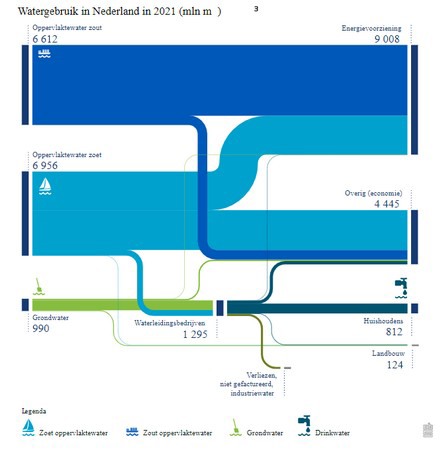
Agricultural sector used less water
In 2021, the agricultural sector used 124.4 million m3 of water. A year before that was 349.1 million m3, so 64.4% less. Water use in 2021 was thus back to the 2017 and earlier level. The years 2018, 2019, and 2020 had relatively dry springs and summers. More ground and fresh surface water were thus used for crop irrigation. Drinking water use - mostly used to water livestock and clean stables - has remained virtually unchanged from 2003 to 2021.
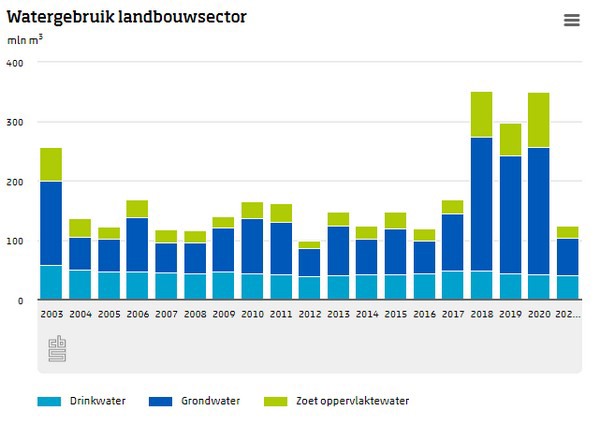
Water use in the agricultural sector.
Energy sector used less fresh surface water
Power plants used nine million m3 of water in 2021, but since then, they have increasingly been using less and less fresh water for cooling. That is due to the policy of increasingly placing new power plants on the coast as much as possible to reduce freshwater dependence. In 2012, cooling water was 62% fresh and 38% seawater, compared to 35% fresh and 65% seawater in 2021.
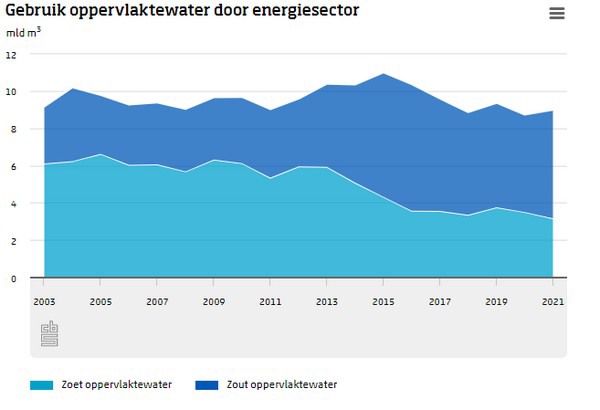
Energy sector's surface water use.
Sewerage plant performance remains on par
In 2021, Dutch sewerage plants treated 1.96 billion m3 of wastewater, 1.3% more than in 2020. The plants removed 98% of biodegradable pollutants from household and business wastewater. In 2021, 85% of nitrogen and 87% of phosphorus compounds were extracted from sewage, the same as in 2020.
As water treatment keeps improving, residual nitrogen discharges have decreased 63% (from over 39 million kg to 14.4 million kg) since 1990. Residual phosphorus discharge even decreased by 73% (from 6.2 million kg to 1.7 million kg). How well nitrogen and phosphorus fertilizers are removed is an important measure of the sewage treatment plants' performance.

Nitrogen and phosphorus discharge, pre and post-wastewater treatment.
Ever-more biogas converted into green gas
In 2021, sewage treatment plants produced more than 137 million m3 of biogas. That is over 15% of the national biogas production. That was the most ever and six percent more than in 2020. More than 60% of that biogas was used for electricity production. Another 17% was converted to green gas. That is more than double that of a year before. This green gas is often returned to the natural gas grid for use by other parties.
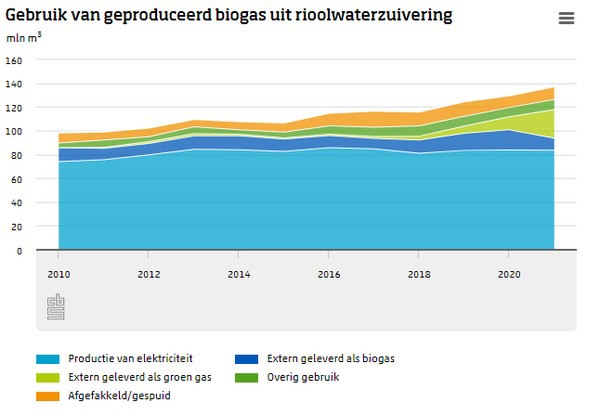
How sewerage treatment produced biogas is used.
More solar power used for water treatment
Of the power used in 2021 for sewage treatment (810 million kWh), 8.5% came from its own solar panels, double compared to 2020. Its electricity production from biogas was 175 million kWh, about the same as the annual consumption of 62,000 households. The electricity still purchased in 2021 was almost exclusively green power.
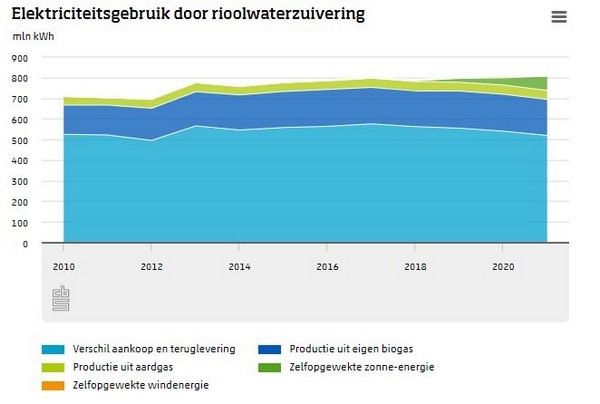
Electricity used by sewerage treatment plants.
Source: Dutch Central Bureau of Statistics
